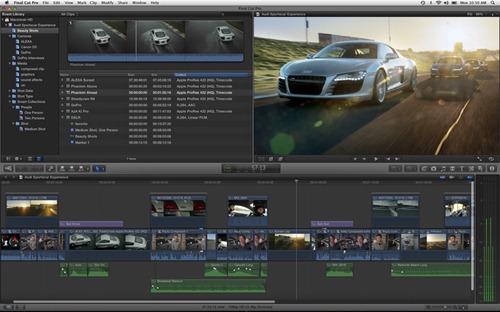Adobe Video Editing Software Free
- Video Editing Software Free Download
- Adobe Video Editing Software Free Download Full Version For Windows 10
- Adobe Video Editing Software Free Download Full Version Filehippo
Video editing that’s always a cut above. Premiere Pro CC is the leading video editing software for film, TV, and the web. Creative tools, integration with other Adobe apps and services, and the power of Adobe Sensei help you craft footage into polished films and videos in one seamless workflow. Adobe Premiere Pro, free and safe download. Adobe Premiere Pro latest version: Real-time editing for professional video production. Adobe is acclaimed worldwide for its impressive software tools, many of which have become true in.
Video Editing Software Free Download
• (macOS, Windows) • (macOS, Windows) • (macOS, Windows) • (macOS, Windows) – Also software • Flame • Autodesk Smoke • (Windows, macOS) • (Windows) • (Windows, macOS) – Also software • (Windows) • (Windows) • (macOS, Windows, Linux) • (Windows) • (macOS) • (macOS, Windows, Linux) • (Windows) • (macOS) • () • (Windows) • (Windows) - previously • Suite (macOS) • (Windows) • (Windows, macOS) • (Windows) • (Windows) • (Windows, hardware suite) • (Windows, macOS, iPad, Android) • (Windows) Discontinued [ ].

Final Cut Pro emerged as the top alternative to Adobe Premiere based on our reviews. It boasts of powerful, professional-grade video editing features and capabilities aside from the fact that it’s an Apple product which ensures you get a top quality, state-of-the-art tool. But there are also other equally capable video solutions out there. Read on to find out. Are you searching for an alternative video editing solution to Adobe Premiere? You’ve come to the right page if you’re looking for for your business or professional needs. There are plenty of quality tools available in the market but we’ve narrowed down the choices to the top 10 alternatives to Adobe Premiere Pro so you don’t have to spend precious time going through each product’s features and functionalities.
What should you look for in a video editing software? If you are in the business of video editing or required to prepare videos for sales and marketing, the editing software should cover the whole gamut – from basic features to advanced capabilities – giving you the flexibility to take in a whole range of projects. The editing software should carry features that enable you to work on, automate, or handle the following: • Basic editing. Tons of features won’t matter if you’re software can’t do the basics like trimming, splitting, and joining video clips; adding and adjusting audio to sequences; and putting in titles, captions, and transitions, among others. • Multi-cam editing. Capabilities to edit footages of same events/scenes from several cameras and let you create multi-camera source sequence and workflows.
Adobe Video Editing Software Free Download Full Version For Windows 10
• Titles & transitions. From simple to cinema-level, the software should be able to provide seamless titles and transitions whether you create your own, import them from external source or select from pre-built elements that come with the software. • Special effects. These can be provided by the software or lets you build your own. It should be able to automate the process of creating these and including these in your sequences. • Manage audio. From single track to multi-track, the editing software should be able to edit, trim, modify, sync audio to video, adjust levels, remove noise, and more.
Adobe Video Editing Software Free Download Full Version Filehippo
• Support various video & audio formats. There are dozens of video and audio file formats being used today. The software may not necessarily support all of them but be able to work with the most common ones used in video, movies, and films. • Handle HD & VR. While many video editing tools are already capable of handling high definition and VR materials, they should also be able to work with the latest kind of video media which is 360-degree VR and offer compatible features such as image stabilization, titles, effects, and others.